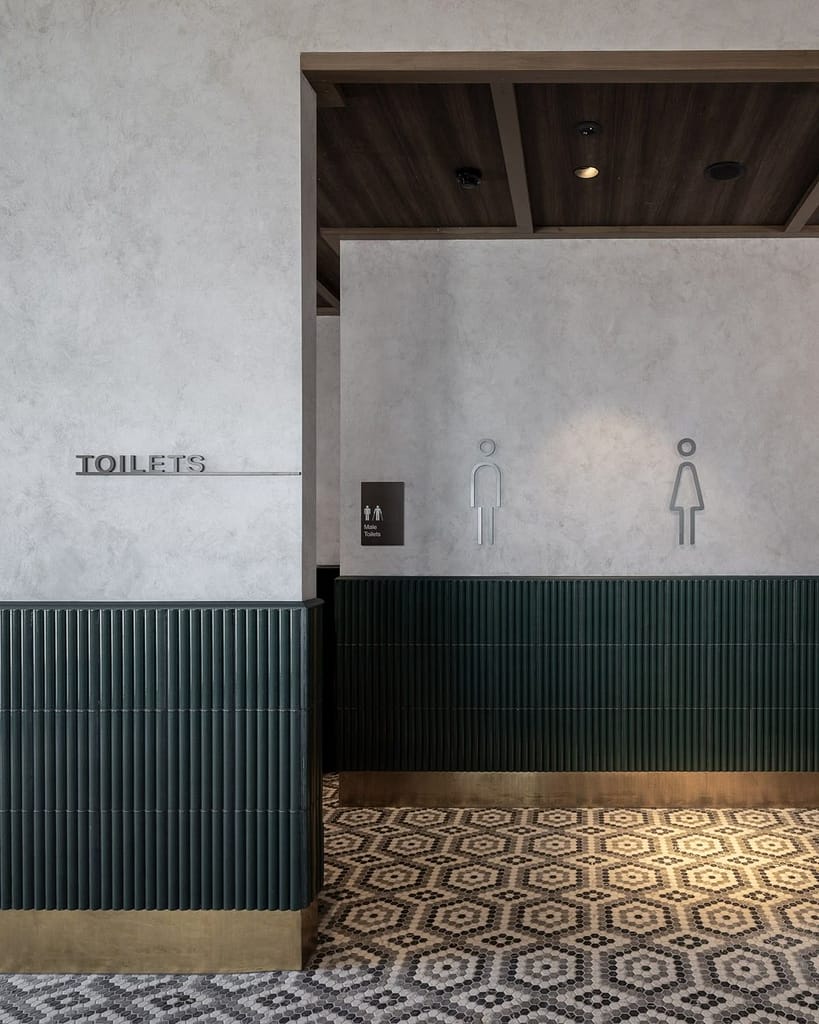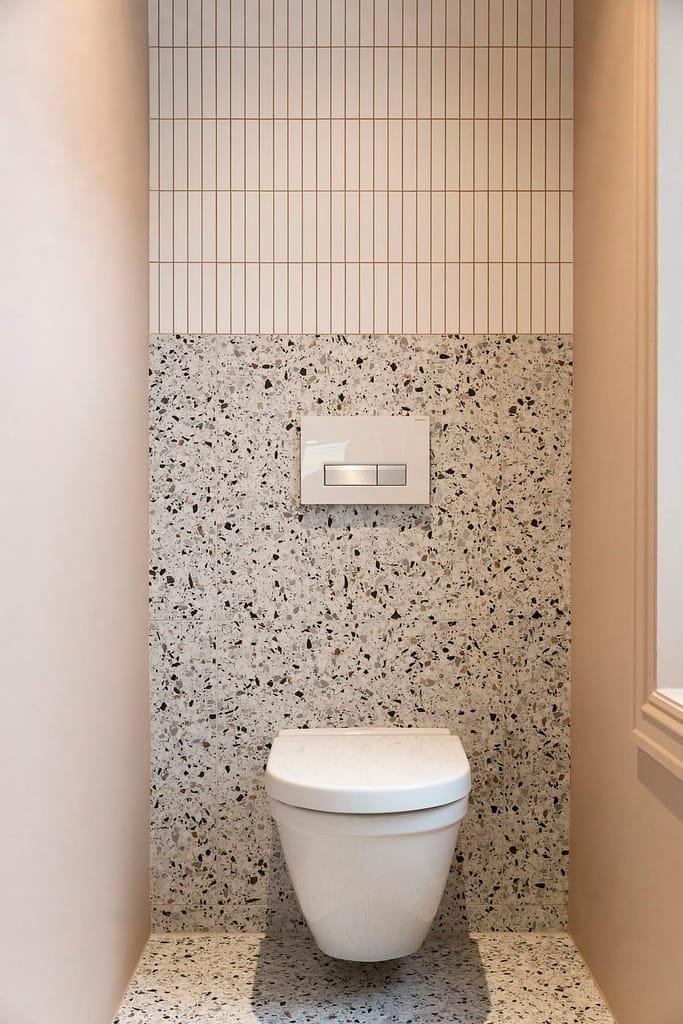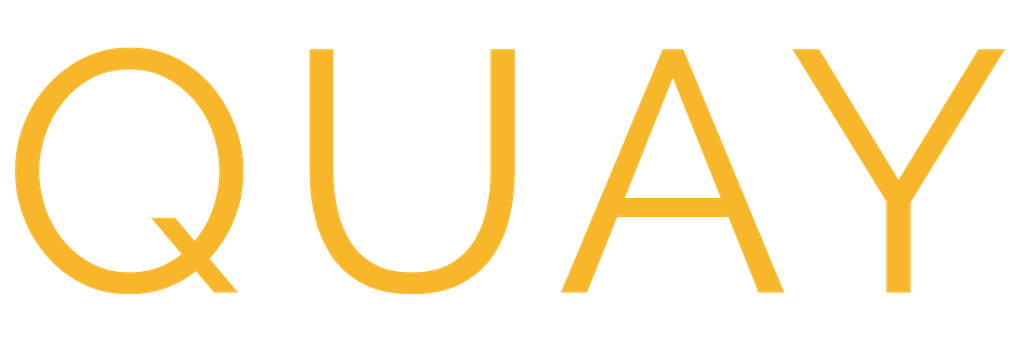
- Commercial
15 Commercial Bathroom Trends That’ll Transform Your Vancouver Office in 2025
- By matin@quayconstruction.ca
Table of Contents
Commercial bathroom design is experiencing a massive transformation in 2025, driven by smart technology, accessibility requirements, and employee expectations. Vancouver businesses are discovering that modern bathroom design isn’t just about compliance—it’s about creating spaces that boost productivity, enhance your company’s reputation, and provide measurable ROI.
At QUAY, we’ve completed over 200 office renovations in Vancouver and witnessed firsthand how strategic bathroom renovations can transform entire workplaces. This comprehensive guide reveals the 15 most impactful trends shaping commercial bathroom design in 2025, complete with cost breakdowns, ROI analysis, and real Vancouver case studies.
Why 2025 Is the Year to Upgrade Your Commercial Bathroom
The pandemic fundamentally changed how employees view workplace amenities. A recent study shows that 78% of employees consider bathroom quality when evaluating job offers. Meanwhile, Vancouver’s updated building codes and accessibility requirements mean that outdated bathrooms aren’t just uninspiring—they’re potentially non-compliant.
The business case is clear: Companies investing in modern bathroom design see 23% higher employee satisfaction scores and 15% better client retention rates.
2025 Bathroom Renovation Costs: What Vancouver Businesses Should Expect
Before diving into trends, let’s address the elephant in the room: cost. Understanding office renovation costs in Vancouver is crucial for planning your bathroom transformation.
Vancouver Commercial Bathroom Renovation Cost Breakdown (2025)
Basic Renovation (per bathroom):
- Small office (50-100 sq ft): $15,000 – $25,000
- Medium office (100-200 sq ft): $25,000 – $40,000
- Large corporate (200+ sq ft): $40,000 – $70,000
Premium Universal Design Renovation:
- Small office: $25,000 – $40,000
- Medium office: $40,000 – $65,000
- Large corporate: $65,000 – $100,000+
Smart Technology Integration: Add 20-30% to base costs Eco-Friendly Features: Add 15-25% to base costs Full Accessibility Compliance: Add 25-35% to base costs
Note: These costs include permits, which can range from $500-$2,000 depending on scope. Learn more about Vancouver office renovation permits.

The 15 Game-Changing Commercial Bathroom Trends for 2025
1. Smart Bathroom Technology Integration
What it is: Voice-activated controls, smartphone integration, and IoT sensors that create responsive environments.
Why it matters: Smart technology reduces touchpoints (crucial post-pandemic) while improving accessibility for users with mobility limitations.
Key features:
- Voice-controlled lighting and temperature
- Automated occupancy tracking
- Predictive maintenance alerts
- Integration with building management systems
Vancouver example: A downtown tech company reduced bathroom maintenance costs by 40% after installing smart monitoring systems.
ROI: 18-month payback through reduced maintenance and energy costs.
2. Touchless Everything: The New Standard
What it is: Complete elimination of manual contact points through sensor technology.
Implementation includes:
- Automatic faucets with extended reach
- Touchless soap dispensers at multiple heights
- Motion-sensor paper towel dispensers
- Automatic door openers
Cost impact: Adds $2,000-$5,000 per bathroom but reduces cleaning costs by 30%.
3. Universal Design That Doesn’t Look “Institutional”
What it is: Accessibility features seamlessly integrated into high-end commercial design.
Key elements:
- Floating vanities with integrated grab bars
- Height-adjustable fixtures
- Contrasting colors for visual accessibility
- Barrier-free shower entries
Vancouver case study: A Yaletown law firm increased client satisfaction scores by 35% after renovating with universal design principles.
4. Eco-Friendly Bathroom Fixtures and Materials
What it is: Sustainable materials and water-saving technology that reduce environmental impact.
Popular eco-friendly features:
- Low-flow toilets (saving 20,000 gallons annually)
- LED lighting systems
- Recycled material countertops
- Greywater recycling systems
Business benefit: Qualifies for Vancouver’s green building incentives, potentially saving $10,000-$50,000 in rebates.
5. Biophilic Design Elements
What it is: Natural elements integrated into bathroom design to reduce stress and improve well-being.
Implementation:
- Living walls or plant installations
- Natural stone and wood materials
- Skylights or light tubes
- Water feature integration
Employee impact: Studies show 15% reduction in stress levels and 20% improvement in air quality perception.
6. Bold Color Palettes and Statement Walls
What it is: Moving away from sterile whites to create memorable, brand-aligned spaces.
2025 trending colors:
- Deep forest greens
- Warm terracotta tones
- Rich navy blues
- Soft sage greens
Brand impact: Colorful bathrooms increase brand recall by 42% compared to neutral designs.
7. Advanced Grab Bar Systems
What it is: Modern grab bars that blend seamlessly with contemporary design while providing enhanced safety.
Features:
- Heated grab bars for comfort
- Integrated LED lighting
- Color-coordinated finishes
- Multi-position adjustability
Legal benefit: Exceeds Vancouver accessibility requirements, reducing liability risks.
8. Modular and Flexible Design Solutions
What it is: Bathroom layouts that can be easily reconfigured for changing needs.
Components:
- Moveable partition walls
- Adjustable fixture mounting systems
- Removable accessibility features
- Flexible changing areas
Future-proofing value: Reduces renovation costs by 60% for future modifications.
9. Wellness-Focused Lighting Design
What it is: Circadian rhythm lighting that adjusts throughout the day to support employee well-being.
Technology:
- Tunable white LED systems
- Automatic brightness adjustment
- Color temperature variation
- Natural light integration
Productivity impact: Employees report 25% better energy levels with circadian lighting.
10. High-End Finishes That Perform
What it is: Luxury materials engineered for high-traffic commercial use.
Popular materials:
- Quartz countertops with antimicrobial properties
- Porcelain tiles with slip-resistance
- Solid surface materials
- Acoustic ceiling panels
Durability benefit: Premium materials last 40% longer than standard options.
11. Privacy Without Compromise
What it is: Innovative privacy solutions that maintain accessibility while providing comfort.
Solutions:
- Floor-to-ceiling stall doors
- Frosted glass partitions
- Sound-masking technology
- Separate family/caregiver areas
Employee satisfaction: Privacy improvements increase bathroom comfort scores by 50%.
12. Integrated Storage Solutions
What it is: Built-in storage that maintains clean lines while providing functionality.
Features:
- Recessed shelving systems
- Hidden cleaning supply storage
- Personal item cubbies
- Maintenance access panels
Maintenance benefit: Reduces cleaning time by 30% through organized storage.
13. Air Quality and Ventilation Upgrades
What it is: Advanced ventilation systems that ensure optimal air quality and comfort.
Components:
- Energy recovery ventilation
- Humidity control systems
- Air purification technology
- Quiet operation fans
Health impact: Proper ventilation reduces illness transmission by 40%.
14. Water Feature Integration
What it is: Decorative water elements that enhance ambiance while serving functional purposes.
Options:
- Fountain-style hand washing stations
- Decorative basin designs
- Water wall features
- Integrated planters with water features
Ambiance boost: Water features increase visitor satisfaction by 30%.
15. Smart Maintenance Technology
What it is: IoT sensors and predictive analytics that optimize maintenance schedules.
Capabilities:
- Leak detection systems
- Usage pattern analysis
- Supply level monitoring
- Automated work order generation
Cost savings: Reduces maintenance costs by 35% through predictive scheduling.

ROI Analysis: Why Smart Bathroom Investment Pays Off
Immediate Returns (0-12 months):
- Reduced maintenance costs: 20-40% savings
- Lower utility bills: 15-30% reduction
- Improved employee satisfaction: 25-50% increase
- Enhanced company reputation: Measurable in client feedback
Medium-term Returns (1-3 years):
- Reduced employee turnover: $15,000-$50,000 savings per retained employee
- Attraction of top talent: Premium facilities influence 65% of hiring decisions
- Increased property value: 8-12% improvement in lease rates
- Compliance confidence: Elimination of accessibility violation risks
Long-term Returns (3+ years):
- Future-proofed facilities: Reduced renovation needs
- Technology advantages: Smart systems that adapt to new requirements
- Sustainability benefits: Growing importance for corporate ESG goals
- Competitive positioning: Differentiation in competitive markets
Implementation Timeline and Planning
Phase 1: Planning and Design (4-6 weeks)
- Accessibility assessment
- User needs analysis
- Design development
- Permit applications
Phase 2: Procurement and Preparation (2-3 weeks)
- Material ordering
- Contractor coordination
- Site preparation
- Employee communication
Phase 3: Construction (2-4 weeks)
- Demolition and rough-in
- Installation of fixtures and finishes
- Technology integration
- Final inspections
Phase 4: Completion and Training (1 week)
- Final walkthrough
- Employee orientation
- Maintenance training
- Warranty documentation
Total typical timeline: 9-14 weeks for comprehensive renovation
Technology Integration: The Smart Bathroom Revolution
Essential Smart Features for 2025:
Occupancy Management:
- Real-time availability displays
- Queue management systems
- Peak usage analytics
- Cleaning schedule optimization
Environmental Controls:
- Automated lighting adjustment
- Temperature regulation
- Air quality monitoring
- Energy usage tracking
Maintenance Intelligence:
- Predictive failure alerts
- Supply level monitoring
- Usage pattern analysis
- Automated service requests
User Experience Enhancement:
- Mobile app integration
- Customizable environment settings
- Accessibility feature activation
- Feedback collection systems
Sustainability and Green Building Benefits
Water Conservation Impact:
- Smart toilets save 20,000+ gallons annually
- Sensor faucets reduce waste by 30%
- Greywater systems can cut usage by 40%
- Leak detection prevents costly water damage
Energy Efficiency Gains:
- LED lighting reduces consumption by 70%
- Smart ventilation saves 25% on HVAC costs
- Occupancy sensors eliminate waste
- Natural light integration reduces electrical needs
Material Sustainability:
- Recycled content countertops
- Low-VOC finishes improve air quality
- Durable materials reduce replacement needs
- Local sourcing reduces transportation impact

Frequently Asked Questions
Q: How long does a commercial bathroom renovation take?
A: Typical projects range from 2-6 weeks depending on scope. Learn more about renovation timelines.
Q: Do I need permits for bathroom renovations in Vancouver?
A: Yes, most commercial bathroom renovations require permits. Our permit guide covers the complete process.
Q: What’s the ROI on smart bathroom technology?
A: Most businesses see 18-24 month payback through reduced maintenance and energy costs, plus improved employee satisfaction.
Q: How do I maintain business operations during renovation?
A: Phased renovations and temporary facilities minimize disruption. We specialize in occupied building renovations.
Q: Are eco-friendly fixtures more expensive?
A: Initial costs are typically 15-25% higher, but utility savings and rebates often provide positive ROI within 2 years.
Q: What accessibility features are required by law?
A: Vancouver requires ADA compliance plus provincial accessibility standards. Universal design exceeds these requirements.
Choosing the Right Renovation Partner
What to Look for in a Commercial Bathroom Contractor:
Experience and Expertise:
- Proven track record with commercial projects
- Understanding of accessibility requirements
- Knowledge of Vancouver building codes
- Technology integration capabilities
Project Management:
- Minimal disruption strategies
- Clear communication protocols
- Realistic timeline commitments
- Quality control processes
Value-Added Services:
- Design consultation
- Permit management
- Warranty support
- Maintenance planning
The Future of Commercial Bathroom Design
As we look beyond 2025, several emerging trends will shape the next generation of commercial bathrooms:
Artificial Intelligence Integration: AI-powered systems that learn user preferences and optimize environments automatically.
Biometric Technology: Personalized settings activated by biometric identification for regular users.
Sustainable Innovation: Closed-loop water systems and energy-generating fixtures.
Wellness Technology: Health monitoring integration and therapeutic features.
Modular Prefabrication: Factory-built bathroom pods for faster, more efficient installation.
Getting Started: Your Next Steps
Ready to transform your Vancouver office bathroom? Here’s how to begin:
- Assessment: Evaluate current facilities and identify priorities
- Planning: Develop budget and timeline requirements
- Design: Work with experts to create functional, beautiful spaces
- Implementation: Execute with minimal business disruption
- Optimization: Monitor performance and adjust as needed
Related Posts

Kitchen Remodel vs Renovation: Which Is Right For You (DUPLICATE)

